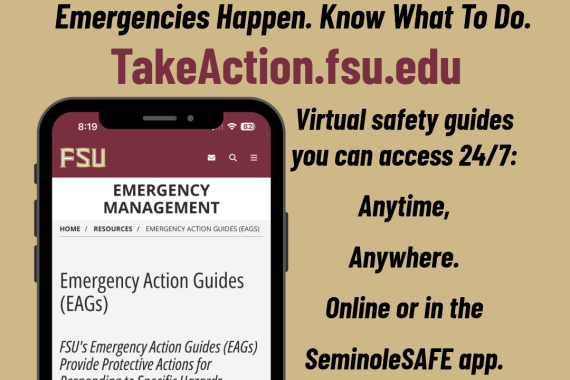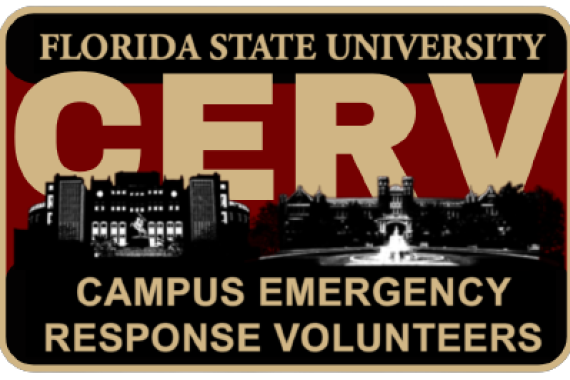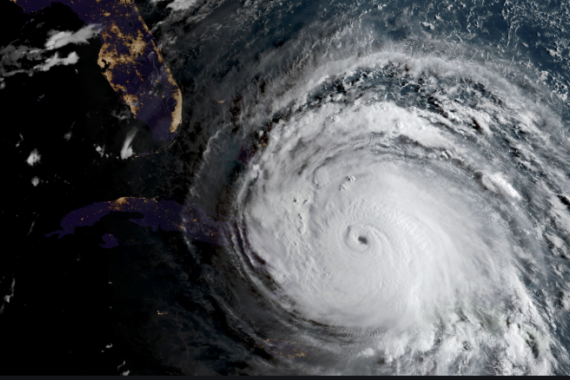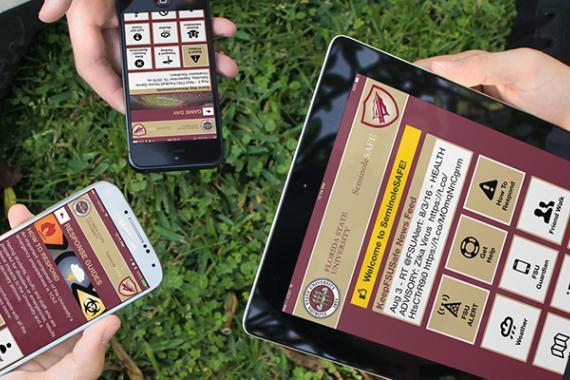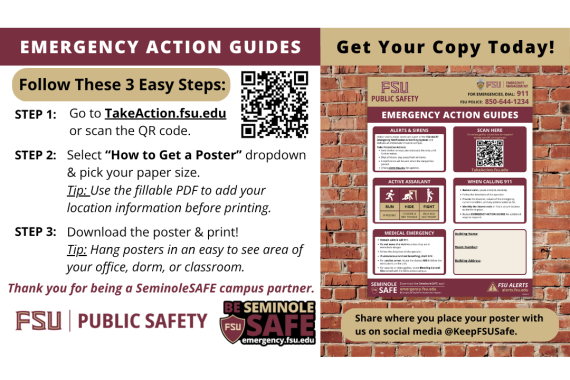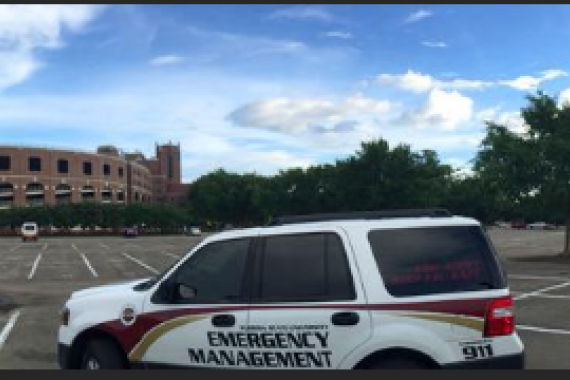Tropical Storm & Hurricane Threat for Florida State University
Is Florida State University Main Campus in Tallahassee located within an evacuation zone for storm surge?
No. The Main Campus of Florida State University in Tallahassee is not located within an evacuation zone for storm surge. This also applies to Southwest Campus, Innovation Park, Alumni Village, College of Medicine, Intramural SportsPlex, and the Reservation. However, portions of southern Leon County, despite being an inland county, are subject to hurricane storm surge and evacuation. Visit Have a Hurricane Plan and download the Hurricane Survival Guide for details.
Are other Florida State University campuses located within an evacuation zone for storm surge?
Yes. The Florida State University campus in Panama City, Florida is located in a Category 3 storm surge zone and subject to evacuation. See the Bay County surge zone map for details. The FSU Ringling Museum of Art and FSU College of Medicine regional campus in Sarasota, Florida are located within designated "Orange" zone by Sarasota County. This generally equates to a Category 2 hurricane storm surge and is subject to evacuation. See the Sarasota County surge zone map for details. The FSU Marine Lab (Alligator Point and Turkey Point) in Franklin County, Florida are located within "Zone A" evacuation zones and subject to evacuation for all tropical storms and Category 1 hurricanes or stronger.
Is Florida State University Main Campus in Tallahassee located within an inland flood zone?
Yes! The Main Campus of Florida State University in Tallahassee has a number of designated flood zones on campus that have historically been prone to flooding. Flash flooding as a result of Tropical Storm Allison in 2001 resulted in the loss of an FSU student's life on campus. Many other areas throughout the Tallahassee community are designated flood zones as well, which may include some off-campus housing complexes. Tropical cyclones, including even the weakest tropical storms, can be prolific rain producers. Rainfall amounts in excess of 5 inches are common, with some storms dropping in excess of one foot of rain! Even under the best of conditions, the drainage systems around the region are not capable of adequately managing large amounts of rain, especially if they fall within a short period of time. If the region is already saturated from previous rainfall before the storms arrival, almost all of the rain that falls will be in the form of runoff. See the table of historical storms below for a sampling of rainfall amounts to have impacted FSU in the past. For more information about flooding on the Main Campus of Florida State University and throughout the Tallahassee community, visit the flooding hazard page.
Is Florida State University Main Campus in Tallahassee vulnerable to high winds?
The Main Campus of Florida State University in Tallahassee has been historically very well built from its beginnings in 1851. The university has always built to the appropriate building code of the time, and in most cases exceeded it. The Florida Building Code, or its predecessors, have taken hurricane wind design seriously, especially since 1985. Even before that, the university built most of its buildings strong and well, incorporating reinforced concrete, reinforced masonry, and/or heavy steel construction. As such, there is high confidence that most of the buildings on campus will maintain their core structural integrity through any storm. In other words, we do not expect to experience any building collapses or roof losses. The greatest weakness of any building to wind damage is its glass, in windows and doors. Glass can be easily broken in extreme winds, especially if hit by flying debris. Most of the glass windows and doors on campus are not impact-resistant or protected by shutters. This is why we warn people to "seek shelter, away from doors and windows" for all severe thunderstorms, tornadoes, tropical storms and hurricanes. The best advice is to place as many walls between you and the outside as possible by going into interior hallways, corridors, rooms, closets, or stairwells during high-wind conditions. This will shield you from any flying glass or debris if a window breaks.
Are any buildings on the Florida State University Main Campus in Tallahassee hardened against high winds?
Yes. The following buildings on Main Campus are currently fully-hardened against high wind and debris, through the installation of hurricane shutters and/or impact-resistant glass: 1.) Tanner Hall - Police Department, 2.) Student Services Building (SSB), 3.) HCB Classroom Building, 4.) Westside Diner (Fresh Food Company) 5.)Turnbull Conference Center.
Is Florida State University Panama City Campus vulnerable to high winds?
Most of the Florida State University campus in Panama City, Florida was built in 1985 or after. Since it is located directly on West Bay, higher wind provisions of the building code were applied. The new Holley Academic Center, built in 2006, is fully-hardened with impact-resistant glass as per the requirements of the Florida Building Code.
Are other Florida State University campuses vulnerable to high winds?
The FSU Ringling Museum of Art in Sarasota, is a historical area that includes a number of very old structures built as far back as 1924. These older structures are highly susceptible to significant structural damage from a hurricane. Many of the newer buildings, built since 2000, were built to modern Florida Building Code standards which include high-wind and hurricane provisions. The FSU Marine Lab (Alligator Point and Turkey Point) in Franklin County, Florida are located directly on the Gulf of Mexico coast. Many of the buildings were built in 1968 and are highly susceptible to high-wind damage. The Main Lab Building has recently had hurricane shutters installed to protect that building. Several newer structures built from 2002 through 2007 were built to modern Florida Building Code standards which include high-wind and hurricane provisions.
Is Florida State University susceptible to tornadoes from tropical cyclones?
Imagine a tropical cyclone, regardless if it is a tropical storm or a hurricane, as a car driving down the road. The area in the right-front quadrant (front-passenger corner) of that car is where the most tornadoes are spawned during a land-falling storm. Therefore, anytime a storm makes landfall heading north or northeast at a point to the west of Tallahassee along the Gulf Coast, we have the greatest risk of seeing tornadoes. The tornado threat may exist for hundreds of miles away from the center of the storm. Examples include Hurricanes Dennis 2005, Ivan 2004, and Opal 1995. For more information about tornadoes on the Main Campus of Florida State University and throughout the Tallahassee community, visit the tornado hazard page.


